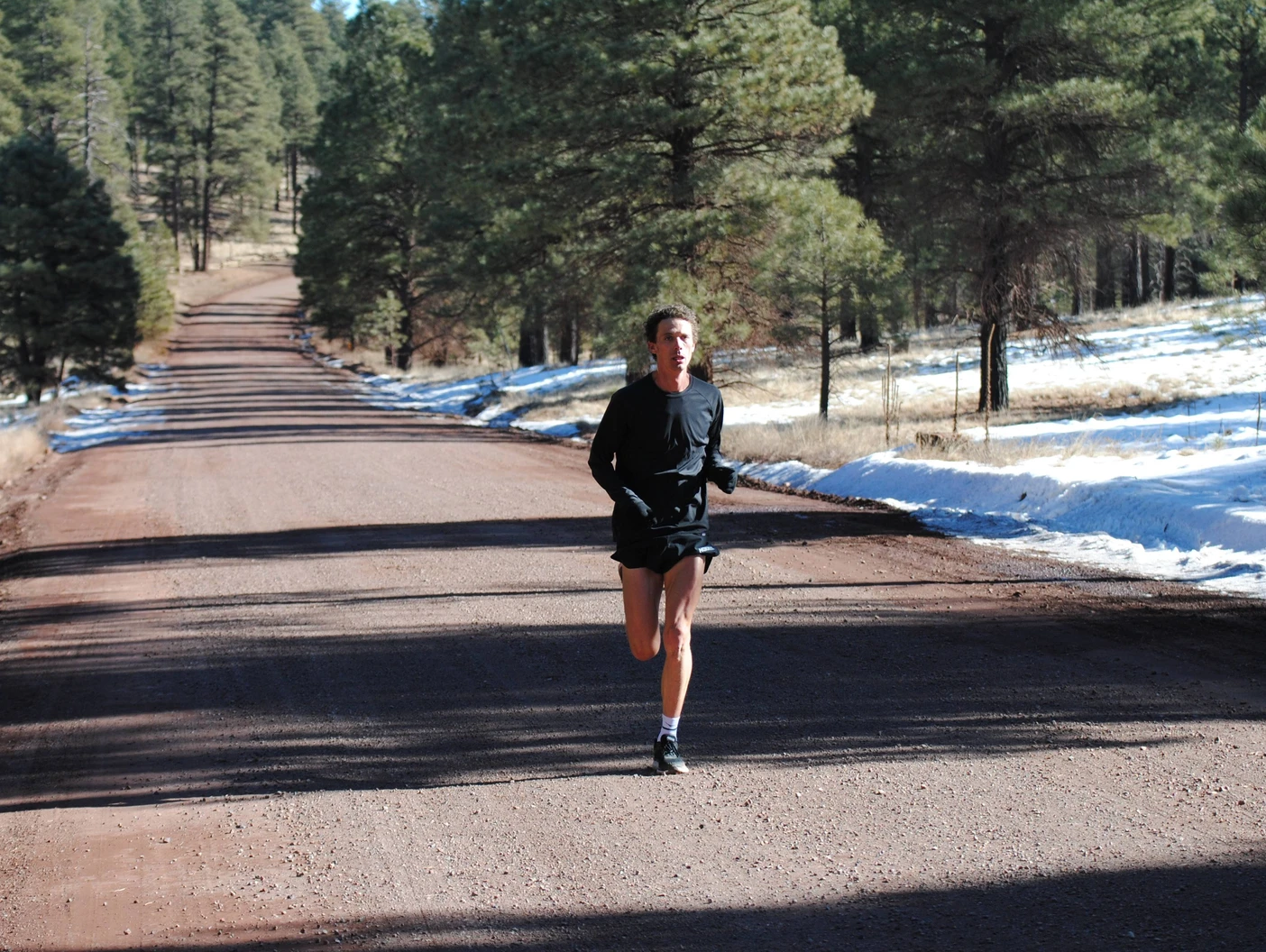I’ve coached hundreds of people to run marathons, and 99% of them are concerned with one thing throughout the whole process. When are we going to do the infamous 20 miler? I’m not exactly sure why, but it’s insanely popular and has a hold on how people think about training for marathons. There’s nothing wrong with a 20-mile long run, but the way I see most runners executing them is with an emphasis on time of feet. Just trying to run 20-22 miles very easy. Rarely are these runs specific to their race paces. If your approach and focus to marathon training has been on easier 20-22 mile long runs, ask yourself a few questions.
Is it harder to extend easy running pace or threshold/marathon pace? What’s the most efficient way to extend either of those paces? If you’ve run several marathons, why does running those long runs of 20 miles or longer feel so comforting?

Something pretty impactful happened to me early in my coaching career. I took on this athlete who had run several marathons before working with me. They were mostly self-coached and trained with friends every now and then. They were not overly serious about training but had run consistently well in a few marathons. When I started going over their training history, they said something I think about almost every day. The longest they had ever run in training was 11 miles.
This was not a former college athlete or a competitive runner; this was just a regular person who had completed several marathons.
Now, I was impressed, and at first, I was blown away, but the more I thought about it, the less crazy it seemed.
Which leads me to my first point.
We drastically overemphasize the difficulty of extending the duration at easier paces.
Obviously, this athlete is a perfect example. They were able to easily run 15 miles longer than they ever had in training at a conversational pace. Obviously, you can’t do that all the time, but in a race setting, it isn’t that crazy.
I’ve coached a few athletes to run 100-mile races. For some, we may run a 50 miler or 100k before the race, but for some, the longest run we do before race day might only be in the 40s. And guess what!? They were able to run a 100-mile race. Because extending easy, lower zone paces, is not too difficult of a task.
It is mentally and emotionally comforting to run 20 miles before a marathon. And yes, there are some adaptations and physiological benefits from 20 mile long runs that make doing the marathon easier. But those runs and their specific adaptations are very low on my hierarchy of training.
Take two athletes: One has averaged 50 miles per week during their training cycle, and their longest long run was 18 miles with race-specific work. Athlete number two hasn’t been as consistent. They’ve only averaged 34 miles per week this block, but they had 3 very easy, 20-mile long runs. I’d bet all of my gold doubloons on the 50 miles-per-week athlete all day. Why? Because total training load is incredibly important and a decent predictor of race performance.
This brings me to point number two:
Focus more on total training load and relative speed and focus less on long, slow, long runs.
Here’s a good Renato Canova quote on specificity and the marathon:
“Everything that is slower than 10% of marathon pace is not specific. So running very long and very slow is not specific but is general.”
Another example:
The first athlete runs a 21-mile easy long run.
The second athlete does a 3-mile warm up, 10 times 1-mile repeats, starting at marathon pace and progressing down off 90 seconds walk/jog rest. 3-mile cool down. About 17 miles with the recoveries.
Who’s session is getting them more ready for the marathon?n
I think the most challenging thing for athletes to process about these types of long runs is the lack of security. I hear it every week. “Well, if I run enough 20 milers, maybe I won’t hit. THE WALL.”
We can’t control when we’re going to get fatigued or tired. Really consistent training and proper fueling during the marathon can help, but even in the absolute best of circumstances, people crumble in the last few miles. It is a grueling and challenging event. You could run 26 miles every weekend, and when you get to your goal race, it could still be a tremendously difficult day. There are no free rides or lunches in the running. The same applies to hills! You can do all the hill workouts and train in a hilly area, and come race day, still be humbled by the elevation changes. 20 milers aren’t a security blanket.
Think about what skill you’re trying to improve and how your training relates to that.
 Counterpoint: Those long, slow, easy runs are some of the most fun I’ve ever had in training. Maybe you get a couple of buddies to come along, you all load up on fuel, and you’re just out there for hours jogging and having a good time. You can’t beat it.
Counterpoint: Those long, slow, easy runs are some of the most fun I’ve ever had in training. Maybe you get a couple of buddies to come along, you all load up on fuel, and you’re just out there for hours jogging and having a good time. You can’t beat it.
Another Counterpoint: I’ve seen runners focus way too much on marathon pace in their long runs, thinking every run they weren’t able to run a good chunk at goal pace was a failure. This is also a dark path to go down. We’re looking for balance here, people.
Third Counterpoint: For beginners and folks newer to running and the marathon, those 20 milers really might be the signal that lets them know they’re capable. And that’s totally okay!
But if you’re stuck on a plateau with your racing, you’ll have to incorporate some work faster than your goal pace and let go of that slow 22-miler.
You will probably get fewer likes on Strava for that run, but when you race faster, it’ll all be worth it.
Wrapping Up
But if you’re stuck on a plateau with your racing, you’ll have to incorporate some work faster than your goal pace and let go of that slow 22-miler.
You will probably get fewer likes on Strava for that run, but when you race faster, it’ll all be worth it.
There isn’t anything magical that happens when your long run goes from 19 miles to 20 miles. The long run is just one part of a comprehensive training plan. We want the entire plan to be as good as it can be, rather than overemphasizing one workout.
The 20-mile long run isn’t a magical workout that guarantees success. It’s important, yes, but it’s just one aspect of a well-rounded training regimen. Running 20 miles isn’t the be-all and end-all of marathon preparation. In fact, placing too much emphasis on this single run can be counterproductive.
Effective training encompasses many things: speed work, threshold workouts, getting enough sleep, optimal fueling during the race, and so much more.
It’s also crucial to remember that training doesn’t always go perfectly. Missing a 20-miler or having it go poorly doesn’t necessarily mean you’re not ready for your race. Life happens, and not every run will be ideal. What’s important is consistency over time and the cumulative effect of your training.
By focusing on the entirety of your training plan and not giving the 20-miler too much power, you allow yourself to adapt, recover, and improve holistically. Every workout has its purpose, and together they prepare you for the demands of race day.
Should First-Time Marathoners Train Beyond 20 Miles?
I saw an interesting question recently from a first-time marathoner wondering if training for a longer race—like a 50K—might help make the marathon feel easier. Basically, would running more long runs over 20 miles help avoid “the wall” at mile 20?
On paper, it seems logical. If you’re consistently knocking out 22-24 mile long runs in training, then race day should feel more manageable, right? Maybe. But play out that scenario:
Let’s say you do stack up a bunch of extra-long runs, and now running 22 miles feels like nothing. You show up on race day, you don’t hit a wall, and the last 6 miles are smooth. That would be great—except, odds are, you’d wish you had run the race faster. Because if you’re that fit, you’re going to want to push your limits a little. And that’s where the real challenge of the marathon comes in.
The better approach? Raise your overall weekly mileage consistently and incorporate threshold and speed work that aligns with your fitness. That’s true whether you’re training for a half, full, or even a 50K. The marathon isn’t just about surviving 26.2 miles—it’s about running it well.
And when it comes to the dreaded “wall,” that’s more about fueling and pacing than simply extending your long runs. If you’re running slow enough and fueling properly, sure, you can avoid the wall. But if you’re racing a marathon? It’s going to be hard. That’s just part of the game.
So instead of stretching out your long runs to ultra distances, focus on building your weekly mileage, executing key workouts, and nailing your fueling strategy. That’s what’s going to set you up for the best possible marathon day—not just trying to out-train the distance.
So, don’t let the allure of the 20-mile long run overshadow the other vital components of your training. Keep your perspective balanced, and trust in the comprehensive plan you’ve laid out. Your success will come from the collective effort, not from a single, isolated run.



